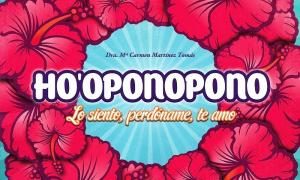The Marie Kondo method: order your life and your mind
Japanese Marie Kondo's method of order has become a worldwide phenomenon through his interesting book The Magic of Order.
The young expert explains: “We believe that when we store something, we are placing things that we do not need in a closet or a drawer or a shelf, however, this is an illusion. In the long run the places where we have stored what we did not want will be too crowded and chaos will appear again ”.
Marie states that true organization begins with elimination, and relates it to a transformation that goes beyond the physical: "By organizing your living space and transforming it, the change is so profound that it seems that you live in a different place."
The relationship between order and well-being
This week, Sònia Algueró, Technical Director of Institute of Psychological and Psychiatric Assistance Mensalus, she shares the essence of the Marie Kondo Method and opens a reflection on "letting go".
What does the Konmari Method reveal?
The fundamental pillar of the Konmari method (a play on words based on the name of the creator) is based on discarding the unnecessary and keeping only the essential that makes us happy. Marie explains that physically getting rid of things that we do not want, later, facilitates the establishment of limits to what does not satisfy us.
People accumulate objects without considering the meaning they have for us at the present time. Most of them possibly served in the past, but what role do they play now? For this successful author, throwing away frees us from our burden and leaves us with energy for the present.
There is a parallel between our current and past thoughts, behaviors, and emotions. Long ago, many had a function in our lives that, to this day, has ceased to exist. And not only that. His presence in the now decenters us and generates confusion (between what we think-do-feel), leading us to distance ourselves from our true essence.
Marie Kondo and her method of achieving greater well-being
What is the relationship between physical organization and mental organization?
Organizing ourselves physically has a direct effect on mental organization and goal planning. Focusing attention and energy towards a goal goes hand in hand with the liberation we mentioned.
Likewise, the Japanese author explains that putting things in order also means putting your past in order. It is something like readjusting life and "closing chapters" in order to take the next step. In fact, if we think about it, closing boxes and closing stages have a lot in common: in both cases we remove from sight what is in the way and steals space.
Leaving stages behind and integrating the meaning that it has had for us, as well as recognizing what it has given us and is already part of us, allows us to move towards our most essential self.
How do we decide to discard?
The Method proposes to put aside the criterion of use or function, to delve into something deeper: "this object, what does it make me feel?"
Right off the bat it is not an easy question to answer since it is something that we do not usually ask ourselves. Trying it is revealing, I invite you to do so. When we question whether that object makes us vibrate, when we express the emotion that it transmits to us, that is when we start to feel to decide instead of just thinking. This information is what validates or invalidates the withdrawal of the object.
If we finally choose to scrap it, an interesting way to say goodbye is by thanking you for the service you have provided. Thus, we will reduce the anxiety generated by eliminating our belongings.
So the first step is to research and gather everything we have from the same category (clothes, books, papers, etc.) to make the choice. Being able to say: "I no longer want this, it has already exercised its function, now it is not what I need" is a great exercise since its effect does not end there; it has an impact on the rest of vital aspects.
On a psychological level, we can reproduce this process by focusing our attention on our deepest self. It is useful and revealing to ask yourself if that thought or behavior that we consider to discard, makes us feel good or, on the contrary, blocks us and does not allow us to move forward.
Likewise, it is especially interesting to question whether there is coherence between what we think or do and what we feel when we think or do it. In this way, our emotions will guide us towards our most genuine needs.
Is it easy to say, "I don't want this for my life"?
Many times it is more complicated than it seems. We are not trained to let go, quite the contrary. Re-educating the mind in this sense through physical elements, facilitates the "letting go" of unwanted aspects of our life: a relationship, a task, a practice / hobby, a job, etc. The weight of the obligation often obfuscates the capacity for self-listening.
That said, it takes courage and determination to set limits and turn away from the fears that paralyze us and distance us from our essential self. For this reason, I encourage you to answer: "What do I really want / need at this moment in my life?"
What would you say to all those people who are reading this interview?
Introspectively speaking, accumulating anachronistic thoughts and behaviors leads us to block the essentials, plunging us into confusion and discomfort.
The Konmari Method reconnects with the sense of things that surround us and brings the person closer to a "click" that, until now, was costly. In the end, the outcome is very simple: "Take what you do want and let go of everything that, now, no longer has a meaning for you."

